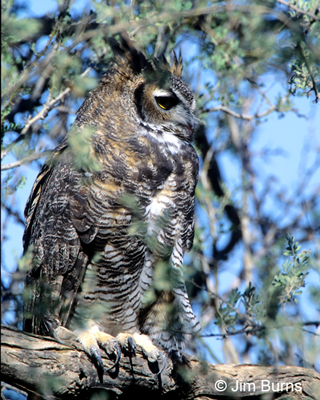
If you’re a birder and you don’t have a thing for owls, Slaght’s book would be an excellent place to begin acquiring one. In addition to his love of nature, adventure, and meticulous field research, he is a gifted writer, and this book reads more like noir fiction and nothing like a scientific doctoral thesis project. It is replete with shady characters, bleak settings, and brushes with disaster, but the conservation of Fish Owls and, more importantly, Fish Owl habitat triumphs in the end.
Blakiston’s Fish Owl is the world’s largest owl, one-third again larger(!) than our Great Horned Owl. Jon Slaght, a native Minnesotan, is now the Northeast Asian coordinator for the Wildlife Conservation Society, but when he saw his first Fish Owl in the year 2000 while serving in the Peace Corp in Primorye Province, Russia, he was only a casual birdwatcher. His grainy photographs proved this elusive and endangered species still hung on in the coastal mountains north of Vladivostok where it hadn’t been seen in over a hundred years, and it set Slaght on the course of his life’s work.
The key to the book, and to the study of Blakiston’s Fish Owl, lies in the fact that research must be done in winter when, like our Great Horneds, they are most vocal as they pair up, establish territories, and leave tracks in the snow on the riverbanks where they go to fish for salmonid species. In temperatures of minus 30 Celsius! There are a lot of ways to die doing outdoor research in Primorye in winter, and in Slaght’s twenty winter months in the forests there between 2006 and 2010 he had brushes with many of them.
Falling through thin ice while navigating frozen rivers, on foot and snow machine? Check. Unexpected dunkings, in full winter clothing, in flash floods during snowmelt in early spring? Check. Stranded on foot in waist deep snow miles from habitation? Check. Manhandling provision sleds for hours through mazes of blowdown timber? Check. Death by Amur Tiger? A fisherman was killed and eaten by a tiger in Slaght’s research territory. Death by vodka? Slaght partook sparingly and only when social interactions with villagers and reclusive hunters seemed to require it.
Imagine, in these adverse conditions, the questions Slaght and Sergey, his Russian research partner, had to answer over and above the logistical problems of just getting into suitable habitat. Where are the owls? The first season they spent walking the snowy river valleys listening for calls, looking for tracks, and scoping for the occasional massive nest trees, Japanese Poplars or Manchurian Elms, with blowouts or huge cavities.
Then, how do you capture a bird over two feet tall with a six foot wingspan? Sergey had done it once by chance with a trip wire on a fall trap, but they settled on a noose carpet, with the nooses loose enough a captured owl could escape if the researchers failed to hear the trap transmitter. During their second season, after a few failures, they devised a box trap of open mesh in which they placed prey fish, then put it in shallow water at the river bank next to the noose carpets.
And, finally, how do you restrain, measure, draw blood, and attach leg bands and a lipstick sized transmitter to a Fish Owl’s back without traumatizing it or having your arm or hand sliced open with beak or talons? Carefully of course, and by the end of their second field season they were well practiced, having captured and released one of the resident owl pairs in four different territories.
Tracking the birds, learning their habitat needs, and pinpointing where potential environmental threats might arise led to Slaght’s conservation plan for the species. I’ll let Slaght tell you what it meant to him in his own words—“Primorye is, more so than most of the temperate zone, a place where humans and wildlife still share the same resources. Many parts of the world are too urban or overpopulated for such natural systems to exist: In Primorye, nature moves in a flow of interconnected parts. The world is richer for it. Fish Owls are a symbol of this functioning ecosystem, a demonstration that wilderness can still be found.”
Blakiston’s Fish Owl surely belongs in that pantheon of charismatic avifauna—condors, eagles, falcons--atop both the planet’s avian food chain and the iconography of birders’ most fevered daydreams. Jon Slaght’s new book will take you to the place where the world’s largest owl lives, a place it’s doubtful you’ll ever visit, a place which must live on in our imagination as we struggle to reinvent our relationship to our planet and its other living creatures.